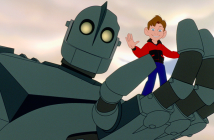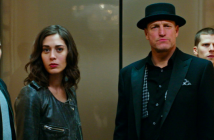
“It’s a perfect night for mystery and horror. The air itself is filled with monsters!”
BRIDE OF FRANKENSTEIN – Those words are spoken by none other than Mary Shelley herself, the author of Frankenstein, in yet another inventive and masterful meta-introduction form director James Whale. Much like the introduction of Edward Van Sloane which ominously opens Whale’s version of Frankenstein, it is Mary Shelley and her friends discussing the madness of her novel on a dark and stormy night. They theorize what must have happened once the monster was left for dead in the rubble of the windmill, once Henry Frankenstein was taken away badly injured after his fall. This macabre curiosity sets the course for Bride of Frankenstein, the first direct sequel to a Universal Horror Classic, and easily the finest of all the Universal Horror films.
James Whale, an openly gay filmmaker in a time when being openly gay was frowned upon, manages to add flair and panache to this sequel, supplanting the morose dread and doom of the original picture with irony, satire, and just a splash more madness.
What is so perfect, so utterly succinct about Bride of Frankenstein is the tone. James Whale, an openly gay filmmaker in a time when being openly gay was frowned upon, manages to add flair and panache to this sequel, supplanting the morose dread and doom of the original picture with irony, satire, and just a splash more madness. And the homosexual subtext is brilliant, obviously overlooked by audiences in 1935 but clear to see here in 2013. Every frame of the picture is meticulous in its art direction, and beyond the laughs and the fun scattered throughout, there are touching and poignant moments of sadness and longing.

We pick up immediately where we left off in the original Frankenstein in 1931. Henry Frankenstein has been taken to the hospital to recover while the angry mob returns to town. But the father and mother of the drowned girl from the first film desire to see the body of the beast. The father’s discovery leads him down to what must be a watery grave, only to find the monster (played once again by Boris Karloff), badly burned, but quite angry with the whole situation. Once he kills the father and escapes the pit, he is quite literally roaming the countryside looking for food and shelter. In an interesting twist on the original, the monster tries to save a woman from drowning but is, of course, misunderstood as being her attacker. The monster is drawn to the sounds of a violin, and an old blind man who is so desperate for companionship he takes the monster in and begins to teach him to speak. He also teaches him about a few of the finer things in life, like cigars and music.
Meanwhile, Henry Frankenstein is recovering both physically and mentally, wanting nothing more than to reconcile with and live a long happy life with his bride, Elizabeth. But before he can go away to live happily ever after, his plans are interrupted by one Doctor Pretorius, played with zany camp and pitch-perfect insanity by Ernest Thesiger. Dr. Pretorius has a plan to continue Henry’s work, and shows off his own life creations in the most peculiar scene in the film; he pulls out tiny people living in their own individual jars. Of course, Henry doesn’t want to continue his work but is drawn in by the madness of Pretorius at first. It isn’t long before Pretorius and the monster cross paths and, now that the monster has been educated, devise a plan to force Henry into creating a mate for the sad and lonely creature. They kidnap Elizabeth in order to force Henry’s hand.
Once the bride is brought to life and unwrapped, her shock wig and lightning-bolt streaks traveling skyward is even more iconic than any of the other Universal monsters.
It’s easy to forget that the bride has only moments on screen, but her appearance is so iconic it stands out above the rest of the film. Henry and Dr. Pretorius work in a lab that is not only the model for mad scientist laboratories, but it is a set that is re-used in later films (including Mel Brooks’ brilliant Young Frankenstein). Once the bride is brought to life and unwrapped, her shock wig and lightning-bolt streaks traveling skyward is even more iconic than any of the other Universal monsters. The bride is played by Elsa Lanchester, who also plays Mary Shelley in the film’s prologue. Where the monster’s movements are slow and lumbering, the bride’s are quick, nervous twitches. Her sight of the monster elicits a blood-curdling scream that immediately discourages the monster. He realizes this idea has failed, and takes matters into his own hands.
Bride of Frankenstein represents the height of James Whale as a director, of Carl Laemmle Jr’s producing, and of all the Universal Monsters Classics. Whale would not direct another picture in the Universal Horror canon, and the pictures would take a slightly different turn after an extended break between original creature features. The films coming up in this anthology have their own merits, and are legendary in their own individual way. But as a film, full of humor and pathos and macabre thrills, nothing beats the power of Bride of Frankenstein.
[notification type=”star”]98/100 ~ MASTERFUL. As a film, full of humor and pathos and macabre thrills, nothing beats the power of Bride of Frankenstein. [/notification]



